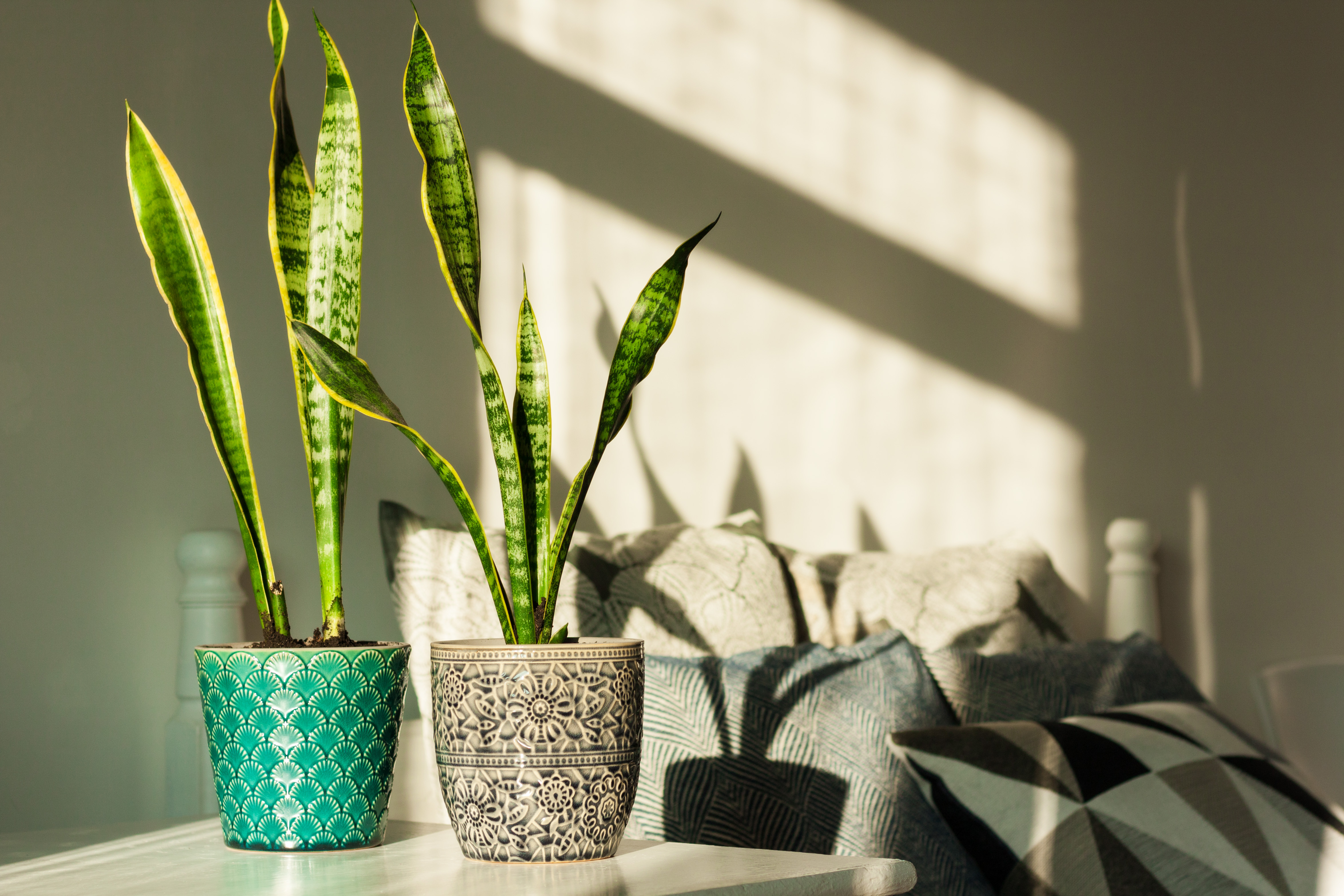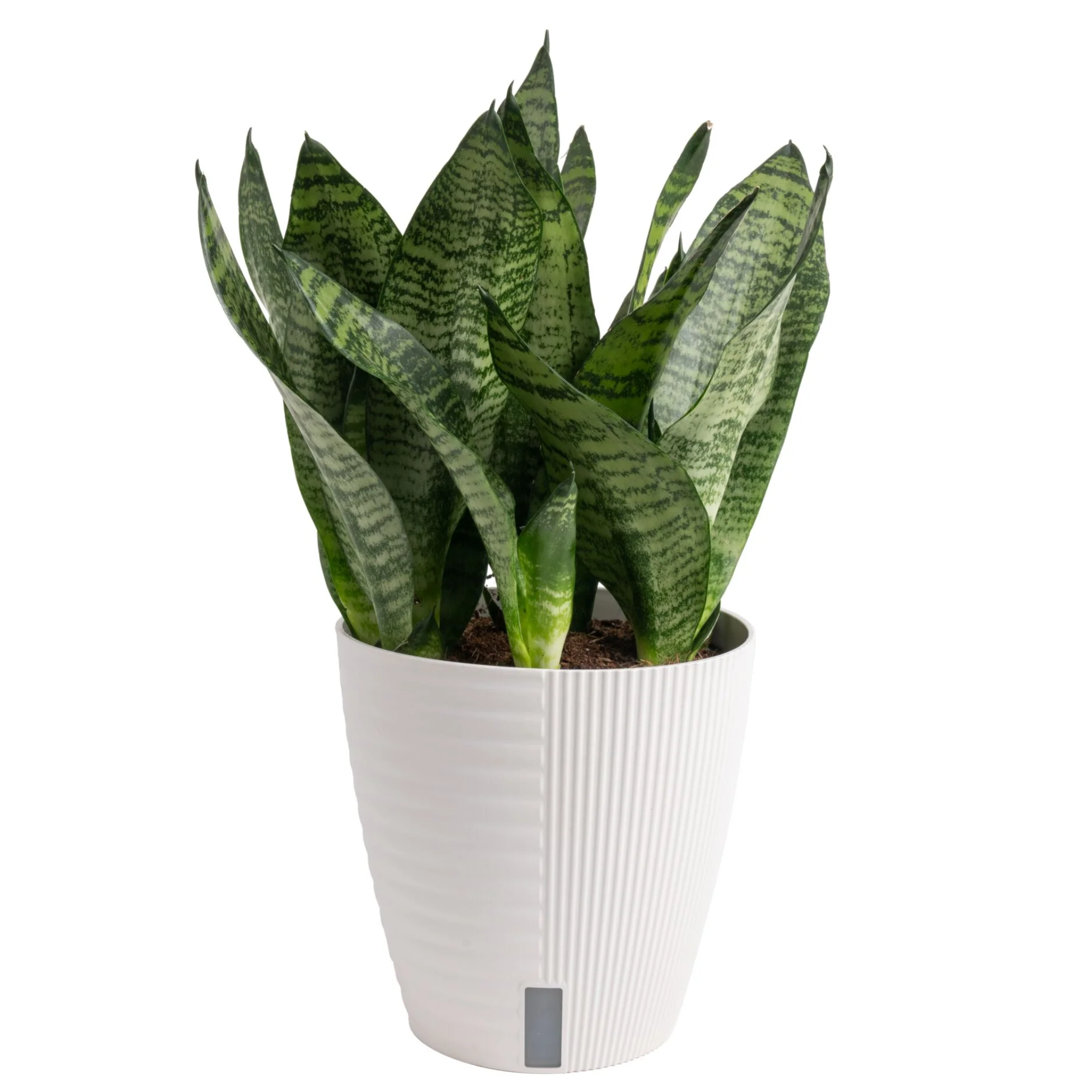Here's How Often You Should Water Your Snake Plant For Consistent Growth and Bright Leaves
Timing matters and here is everything you need to know about taking care of your snake plants watering needs


Stylish, hardy, and a popular indoor addition among gardeners at all skill levels, we can't help but have a special place on our sill for snake plants. Whether you know it as dracaena trifasciata, snake plant, or even as 'mother-in-law's tongue', this is one houseplant that you've crossed paths with.
When it comes to snake plant care, keeping the plant alive is relatively straightforward. However, one of the recurring things that trip snake plant owners up is the watering routine. To assess whether you're treating your snake plant to too much or too little water, take a look at what our experts have to say. When cared for properly, these tropical South African natives are a rewarding home grow.
How Often to Water a Snake Plant

Anastasia Borisevich, gardening expert at Plantum, tells us that the snake plant is one of the best low-maintenance plants for indoor gardening.
Even though Sansevieria is a drought-tolerant plant, Anastasia says it still requires regular watering. She advises giving it a drink once the soil dries up by 1.2 – 1.6 inches without letting the soil dry out completely.
"If it’s warm, water the plant once every 10–14 days," she says. "In winter, the soil needs more time to get dry, so you’ll need to reduce watering to once every three weeks."
How to Water a Snake Plant

Janet Loughrey, an expert at Garden Design, tells us that she begins watering her snake plants by slowly pouring water around the base of the plant, taking care not to splash the foliage. "And stop watering when liquid starts flowing out of the drain holes in the bottom of the pot," she adds.
According to Anastasia, it's best to use soft, tepid water while watering these cooling plants. "Soak the soil thoroughly and evenly, allowing excess water to drain out into the cachepot," she notes. "Empty the outer pot afterward to prevent waterlogging and root rot."
The Livingetc newsletters are your inside source for what’s shaping interiors now - and what’s next. Discover trend forecasts, smart style ideas, and curated shopping inspiration that brings design to life. Subscribe today and stay ahead of the curve.
Anastasia also warns against letting the water rest in the center of the leaves. This happens to be one of the most common snake plant mistakes to avoid as doing so can lead to a bout of rot.
Signs You're Under-Watering Your Snake Plant

If you're noticing some differences in your snake plant's demeanor and can't seem to put your finger on where you're going wrong, Anastasia tells us that it could be an after-effect of underwatering. Below are the two most popular signs that you're not giving your plant nearly enough water.
Dry Spots: If you come across brown spots on the surface of your snake plant, making it feel brittle and weak, consider this a clear manifestation of under-watering.
Stunted Growth: Perhaps you've had your snake plant for a while now, but you've found that it's not growing at the pace you hoped. Chances are that your houseplant is not receiving the hydration it needs to flourish.

Signs You're Overwatering Your Snake Plant
On the other hand, overwatering these popular houseplants can also affect them negatively. Anastasia tells us that these are some of the more prevalent reactions to drowning a snake plant:
Moldy Topsoil: If your snake plant is housing moldy topsoil at the surface, Anastasia says that this is a tell-tale sign that you're giving your snake plant way too much water in one go.
Leaf Deterioration: Since snake plants are pretty much all leaves, this is primarily where your consequences of overwatering will show up. Symptoms typically reveal themselves in the form of yellowing, drooping, wilting, or leaf rot.
Overwatering generally occurs when you skip a couple of waterings and then feel the need to overcompensate to revive your indoor garden. Instead of having your plant get moldy and ill, be mindful of how much water your plant is getting when you give it a catch-up drink.
Like most things in life, striking a balance always outweighs indulging in either extreme and when it comes to watering snake plants, the same principle holds true — they suffer in environments that are too saturated and too thirsty, too.
So, it's best to find your happy medium and stick to a regular watering routine to keep your plant from wilting or drowning. Take it from the experts - something as simple as disciplined plant hydration can turn your crop from lowly to lively.
FAQs
Can a Snake Plant Go Three Weeks Without Water?

As mentioned earlier, snake plants like most succulents can go without water for three weeks at a time in winter. However, in the summer, it's better to treat your plants to water every two weeks at the most.
Neglecting to hydrate your snake plant for more than three weeks in the summer can lead to dry spots, stunted growth and a sadder looking houseplant on the whole.

Amiya is a Home Wellness Writer at Livingetc. She recently graduated with a Masters Degree in Magazine Journalism from City, University of London, and has lent her words to beauty, fashion, and health sections of lifestyle publications including Harper’s Bazaar and Women’s Health. Her experience as a research analyst has equipped her with an eye for emerging trends. When she’s off the clock, she can be found reading, listening to music, or overanalyzing her latest Co-Star update.





